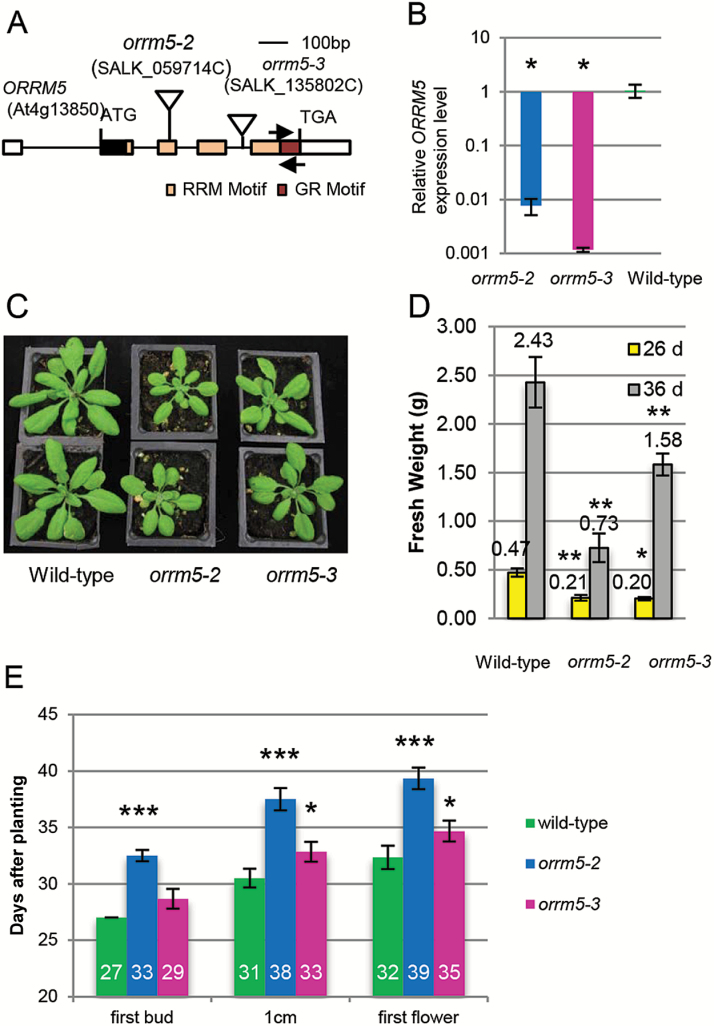Fig. 1.
ORRM5 mutations lead to delayed growth and late flowering. (A) Gene structure of ORRM5. Triangle indicates the locus of the T-DNA insertion. Primers used for the qRT-PCR are represented by arrows. (B) Relative ORRM5 expression level measured by qRT-PCR. ORRM5 expression is reduced to an undetectable level in the two orrm5 mutant lines compared with the wild-type plants (n=3). (C) Plant growth phenotype of wild-type Arabidopsis (left), orrm5-2 (middle), and orrm5-3 (right) homozygous mutants grown at 14 h of light per day for 26 d. (D) Fresh weight of orrm5 mutants and wild-type plants grown at 14 h of light per day for 26 and 36 d (n=5). (E) Days taken for plants to reach these developmental stages. First bud, days until visible flower buds in the center of the rosette; 1 cm, days until inflorescence stems reached 1 cm in height; first flower, days until first open flower (n=6). Student’s t-test: *P<0.05, **P<0.01, ***P<0.001 in comparison with the wild-type. In (B, D, E) values represent mean±SD.

